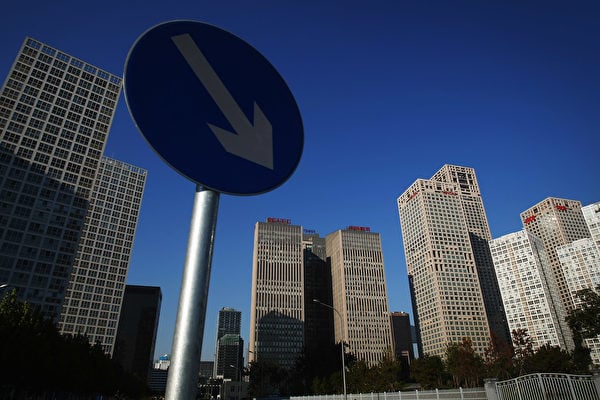After the Chinese Communist Party (CCP) government introduced strong measures to boost the real estate market, in June, house prices in 70 major cities continued to decline, with the prices of new commercial housing experiencing the largest drop in nine years.
According to statistics released by the National Bureau of Statistics of China on July 15th, the data on changes in the selling prices of residential properties in June showed that in the 70 major cities across the country, the selling prices of commercial housing were still decreasing compared to the same period last year.
In first-tier cities, the selling prices of new commercial residential properties decreased by 0.5% compared to the previous month, narrowing by 0.2 percentage points. Beijing, Guangzhou, and Shenzhen saw declines of 0.6%, 1.2%, and 0.7%, respectively, while Shanghai saw a 0.4% increase. Second-tier cities experienced a decrease of 0.7%, with the same magnitude as the previous month, and third-tier cities saw a decrease of 0.6%, which narrowed by 0.2 percentage points compared to the previous month.
As for the sale of second-hand houses, in first-tier cities, the prices decreased by 0.4% compared to the previous month, narrowing by 0.8 percentage points. Beijing and Shanghai saw their prices rise for the first time this year, with increases of 0.2% and 0.5%, respectively, while Guangzhou and Shenzhen experienced declines of 1.5% and 1.0%. Second-tier cities saw a decrease of 0.9%, slightly less than the previous month, and third-tier cities maintained the same decrease of 0.9%.
Additionally, in June, the year-on-year decrease in the selling prices of new commercial residential properties in first-tier cities was 3.7%, expanding by 0.5 percentage points compared to the previous month. Beijing, Guangzhou, and Shenzhen experienced drops of 2.4%, 9.3%, and 7.7%, respectively, while Shanghai saw an increase of 4.4%. Second and third-tier cities saw decreases of 4.5% and 5.4% compared to the previous year, with the decreases expanding by 0.8 and 0.5 percentage points from the previous month.
The year-on-year decrease in the selling prices of second-hand houses in first-tier cities in June was 9.0%, slightly less than the previous month by 0.3 percentage points. Beijing, Shanghai, Guangzhou, and Shenzhen saw declines of 7.8%, 6.3%, 12.4%, and 9.5%, respectively, while second and third-tier cities saw decreases of 7.9% and 7.7%, both with a 0.4 percentage point expansion compared to the previous month.
In May of this year, the CCP government rolled out a series of “historic” measures to stimulate the real estate market, including reducing down payment ratios, lowering interest rates for housing provident funds, abolishing the lower limit on mortgage rates, and using unsold housing as safeguard housing. Chinese media outlets described the policy strength as “epic,” Reuters characterized it as “historic,” and prominent Chinese economist Ma Guangyuan called it a “historic turning point.”
Following the announcement of these policies, the sluggish state of the Chinese property market has not changed. Data shows that in May, the year-on-year decreases in the sales area and sales volume of commercial housing were 16.1% and 24.3%, respectively, with decreases in selling prices across all tiers of cities.
Citing a research report by Moody’s Analytics economist Harry Murphy Cruise, Reuters mentioned, “Recent supportive measures are a step in the right direction, but still fall short in comparison to the scale of the problem. Real estate has deep tentacles. When the real estate industry is hurt, the entire economy will feel the pain.”
While the CCP authorities have lifted some measures such as purchase restrictions to boost market sentiment, Reuters suggested that more stimulus measures may not be able to support price declines.
A report quoted Zhang Dawei, chief analyst at Centaline Property Agency Limited, as saying, “The supply and demand structure of the real estate industry has fundamentally reversed. There is no need to have overly high expectations for the efficacy of policies. The future of the real estate industry is unlikely to see comprehensive growth.”

